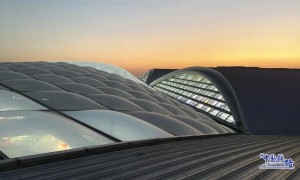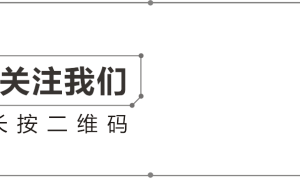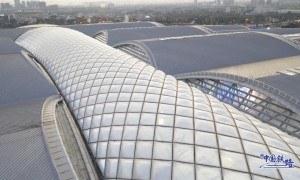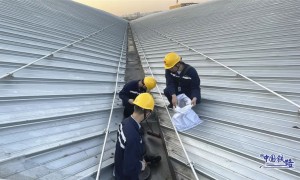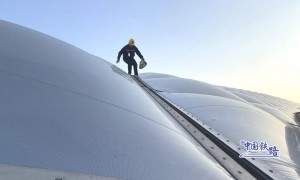第一部分 名词解释
纽带(niǔ dài),基本解释是指起联系作用的人或事物。
桥梁(bridge)指的是为道路跨越天然或人工障碍物而修建的建筑物,它架设在江河湖海上,使车辆行人等能顺利通行。由于时代的进步,赋予了“桥梁”新的词义,泛指为机构与机构之间、地区与地区之间、国家与国家之间,沟通有无、建立合作关系、促进友好交流等诸如此类工作的人的统称。
第二部分 如何理解轻钢在建筑中的纽带和桥梁功能?
1、框架结构→围护墙体:轻钢是填充墙的产业化解决方案
2、毛胚→装修:轻钢为装饰材料提供了“挂点”
3、墙体→管线:轻钢为管线提供了空间
下面的图片均选自HEBEL USA的北美和欧洲项目,只选取高层建筑。
HEBEL是一个混凝土加气板,加气块的产品商标,这个产品在美国、日本、澳洲、欧洲都能买到。
Autoclaved Aerated Concrete (AAC) is a popular building material that draws its roots from the early 20th century. Throughout its existence AAC has gained a considerable share in international construction markets and today, maintains its reputation of the building material of the future. This review presents the background on AAC discovery, early commercial development and eventual international success. Different AAC manufacturing technologies are hereby described and how competition contributed to ways of making AAC over the years. An overview of the latest AAC developments due to continued innovation will conclude with an outlook on the AAC industry landscape.
蒸压加气混凝土(AAC)是一种很受欢迎的建筑材料,它的历史可以追溯到20世纪早期。在其存在期间,AAC在国际建筑市场上获得了相当大的份额,今天,它仍然保持着作为未来建筑材料的声誉。这篇综述介绍了AAC的发现、早期的商业开发和最终的国际成功的背景。在此描述了不同的AAC制造技术,以及多年来竞争是如何促进AAC制造方法的。由于持续创新,AAC的最新发展概况将以展望AAC行业前景结束。
Early History
AAC as a building material has been industrially produced since the beginning of 20th century. AAC stands for Autoclaved Aerated Concrete, alternatively known as Aerated Cellular Concrete (ACC) or Autoclaved Lightweight Concrete (ALC). Early history of AAC is based on a series of process patents.
AAC是20世纪初开始工业化生产的建筑材料。AAC是蒸压加气混凝土的简称,也被称为加气泡沫混凝土(ACC)或蒸压加气轻质混凝土(ALC)。AAC的早期历史是基于一系列的工艺专利。
In 1880, a German researcher, Michaelis was granted a patent on his steam curing processes. Czech Hoffman successfully tested and patented the method of “aerating” the concrete by carbon dioxide in 1889. Americans Aylsworth and Dyer used aluminium powder and calcium hydroxide to attain porous cementitious mixture for which they also received a patent in 1914. Swede Axel Eriksson made a serious next step towards developing modern AAC, when in 1920m he patented the methods of making aerated mix of limestone and ground slate; so-called the “lime formula”.
1880年,一位名叫米切里斯的德国研究人员获得了蒸汽固化工艺的专利。1889年,捷克人霍夫曼成功地测试并申请了二氧化碳“充气”混凝土的专利。美国人艾尔斯沃斯和戴尔使用铝粉和氢氧化钙制成多孔胶凝混合物,并于1914年获得专利。瑞典人阿克塞尔•埃里克森(Axel Eriksson)在开发现代AAC方面迈出了严肃的下一步。1920年,他申请了制造掺有石灰石和地石板的充气混合物的专利;所谓的“石灰配方”。
Chemistry
The combination of cement, lime, gypsum (anhydrite),finely ground sand and most importantly aluminium powder causes the mixture to expand considerably.From the beginning to the end the simplified chemical reactions are shown in fig. 1, which is the final Tobermorite or Hydrated Calcium Silicate C5S6H5.
水泥、石灰、石膏(硬石膏)、细砂和最重要的铝粉的混合物会使混合物膨胀。从开始到结束的简化化学反应如图1所示,这是最终的托贝morite或水合硅酸钙C5S6H5。
The Breakthrough
The real breakthrough in the masonry industry came in 1923 when the same architect Axel Eriksson dis – covered that this moist foamed mass can easily han – dle pressurized steam curing process, also known as autoclaving. While applying for a patent, two crucial conclusions were drawn: 1. the material hardened fast thanks to the autoclaving process 2. shrinkage was almost absent after steam curing compared to the normal air curing. Additionally, it was also discov – ered that alternative materials, such as pulverized ash, could be used instead of lime/cement, allowing to economize on expensive raw material binder.
1923年,同一名建筑师阿克塞尔·埃里克森(Axel Eriksson)提出,这种潮湿的泡沫体可以很容易地进行加压蒸汽养护,也称为高压蒸汽养护,这是砌体工业的真正突破。在申请专利的过程中,得出了两个重要的结论:1。由于采用了高压灭菌法,这种材料硬化得很快。与普通空气养护相比,蒸汽养护几乎不存在收缩。此外,还发现可以用其它材料,如粉煤灰,来代替石灰/水泥,从而节省昂贵的原材料粘合剂。
Start of Commercial Manufacturing
Eriksson’s success immediately attracted a much-needed commercial interest and in 1929 the first large scale manufacturing facility of these artificially-made crystalized stone blocks was launched in a factory named “Yxhults Stenhuggeri Aktibolag” in Sweden under the name Yxhult (fig. 2 & 3). In 1940,the Yxhult name was changed to Ytong as this name was easier to pronounce. In 1932, the factory Carlsro Kalkbruk Skovde started with AAC block production and the product acquired the brand name Durox. An important competitor arose in 1934, which started to manufacture AAC blocks under the brand name Siporit and renamed as Siporex as of 1937. Siporex was also the first to introduce the AAC reinforced elements in 1935, namely roof, floor panels and lintels.Good structural properties of the newly created AAC material soon spread all over Western Europe, with more than six plants only in Sweden alone.
埃里克森的成功立即吸引了一个急需的商业兴趣,并于1929年在瑞典一个名为Yxhult的名为Yxhults Stenhuggeri Aktibolag的工厂里建立了第一个大规模的人造水晶砌块生产设施(图2和图2;1940年,Yxhult的名字改为Ytong,因为Ytong更容易发音。1932年,卡尔斯罗·卡尔克布鲁克·斯可夫德(Carlsro Kalkbruk Skovde)开始生产AAC块,该产品获得了品牌Durox。1934年,一个重要的竞争对手出现了,它开始以Siporit品牌生产AAC积木,并于1937年改名为Siporex。Siporex也是1935年第一个引入AAC加固元素的公司,即屋顶、地板和楣板。新发明的AAC材料良好的结构性能很快就传遍了西欧,仅在瑞典就有六家以上的工厂。
Different Technologies –International Success
AAC manufacturing went international in 1937 with introduction of technology licensing and know-how transfer. After World War II, there existed only a few leading AAC technology suppliers: Siporex and Ytong (both belonging to the Swedes), Durox (bought by the Dutch) and Hebel (German). Throughout the 20th century, all of them successfully sold AAC technology licenses around the world, while at the same time annual conventions contributed to further developments in AAC production, product quality and its applications.Among different manufacturing technologies, production of AAC blocks became associated with Ytong (tilt-cake system), while production of both AAC blocks and reinforced elements was led by Durox, Siporex and later on, Hebel with flat-cake systems.
1937年,随着引进技术许可和技术转让,AAC制造走向国际。第二次世界大战后,只有几家领先的AAC技术供应商:Siporex和Ytong(都属于瑞典人)、Durox(被荷兰人收购)和Hebel(德国人)。在整个20世纪,他们都成功地在世界各地销售了AAC技术许可证,同时,年度大会促进了AAC生产、产品质量和应用的进一步发展。在不同的制造技术中,AAC砌块的生产与Ytong(倾饼系统)联系在一起,而AAC砌块和增强元件的生产由Durox、Siporex和后来的Hebel(平饼系统)领导。
Competition and Growth
Germany, United Kingdom, Sweden, Denmark and the Netherlands established themselves as the main AAC hubs after WWII, albeit the fact that countries used different technologies to produce similar products. Following the triumph of AAC material on an international arena, competition grew stronger between the parties in that relatively small market, often ending up in a battle of patents. Slowly in the 1980s, the influence of Swedes was diminished due to the suffering domestic market. As a result, Siporex activities were reduced to a minimum level and no new plants were built since the 1990s. Additionally, during the 1980s, Germans took over and improved on the know-how of Ytong from the Swedes. Despite fierce competition, multiple plants were realized in Asia, Middle East and Eastern Europe, based on all four different technologies. In the beginning of the 1990s, the first AAC plant based on a tilt-cake technology (Ytong) was supplied to China. From that point onwards, technology outflow became widespread and as of 2014, there are more than 3,000 AAC production facilities worldwide with an estimated production capacity of 450 million m3 per year of non-reinforced blocks. Mass production of blocks is also popular in Central and Eastern Europe and India while Japanese, Korean, Australian and Western European markets are focusing more and more on reinforced panels and high precision blocks.
德国、英国、瑞典、丹麦和荷兰在二战后成为了主要的AAC中心,尽管这些国家使用不同的技术生产相似的产品。随着AAC材料在国际舞台上的胜利,在这个相对较小的市场中,各方之间的竞争越来越激烈,常常以专利之争告终。20世纪80年代,由于国内市场不景气,瑞典人的影响力逐渐减弱。结果,Siporex的活动减少到最低水平,自1990年代以来没有新建工厂。此外,在20世纪80年代,德国人从瑞典人手中接管并改进了Ytong的技术。尽管竞争激烈,在亚洲、中东和东欧建立了多家工厂,采用了四种不同的技术。上世纪90年代初,美国第一家采用倾斜蛋糕技术(Ytong)的AAC工厂被供应给中国。从那以后,技术外流变得很普遍,到2014年,全世界有超过3000个AAC生产设施,估计每年生产4.5亿立方米的非加固砌块。砌块的大规模生产在中欧、东欧和印度也很受欢迎,而日本、韩国、澳大利亚和西欧市场正越来越多地关注加强面板和高精度砌块。
Reinforced Elements
Short after the first AAC block plant emerged in Sweden in 1929, structural reinforced elements followed.Siporex posed a strong competition to Eriksson’s AAC process technology when first reinforced roof and floor panels were successfully manufactured in Sweden, with a so-called “cement formula”. It used mainly cement instead of lime as a binder, which improved the process properties as well as structural load bearing characteristics. The main goal of the Siporex products was to design a complete building system using only AAC. A decade later, Hebel technology evolved in the mid-1940s under the patronage of German engineer Josef Hebel.
不久之后,第一个AAC块工厂出现在1929年瑞典,结构加强元素随后。当瑞典首次成功地使用所谓的水泥配方生产加固屋顶和地板时,Siporex对埃里克森的AAC工艺技术构成了强有力的竞争。主要采用水泥代替石灰作为粘结剂,改善了工艺性能和结构承载性能。Siporex产品的主要目标是设计一个只使用AAC的完整建筑系统。十年后,在德国工程师约瑟夫·赫贝尔的资助下,赫贝尔技术在20世纪40年代中期得到了发展。
After studying the plant in the Baltics during the WWII, Josef Basel based his production technology on Siporex and managed to bring remarkable improvements to the AAC production technology, especially to the reinforced products. Given the disappearance of Siporex from the market, Durox and Hebel technologies became leaders in supplying the reinforced AAC elements due to their more suitable and favourable cutting and curing technique (fig. 4).
在研究了二战期间波罗的海国家的工厂后,约瑟夫·巴塞尔(Josef Basel)将他的生产技术基于Siporex,并成功地将AAC的生产技术,尤其是增强产品进行了显著的改进。Siporex从市场上消失后,Durox和Hebel technologies由于其更合适和更有利的切割和固化技术,成为AAC增强元件供应的领导者(图4)。
In Eastern and Western Europe, many AAC plants successfully supply both AAC blocks and AAC panels. Japan until today, remains a 100% reinforced elements market (fig. 5). Since 2002, reinforced element production was further perfected by the Dutch and nowadays Aircrete Europe’s technology allows manufacturing complete prefab AAC building solutions. Taking into consideration fast, economic and structural building with AAC panels, many countries today are looking for ways to introduce complete AAC building solutions in their local construction markets.
在东欧和西欧,许多AAC工厂成功地提供了AAC模块和AAC面板。直到今天,日本仍然是一个100%增强元件市场(图5)。自2002年以来,荷兰进一步完善了增强元件的生产,如今Aircrete欧洲公司的技术允许制造完整的预制AAC建筑解决方案。考虑到快速、经济和结构建筑与AAC面板,许多国家今天正在寻找方法,以介绍完整的AAC建设解决方案在其当地建筑市场。
Mergers & Acquisitions
Mergers and acquisitions wave of the 1990s has had a crucial impact on the world of AAC as we know it today. In the period between early 1990s and early 2000s, ownership of technologies, plants and brand names became disoriented. Plants, patents, technologies and patents of Durox, Ytong and Hebel ended up under one roof and named Xella. At one point,Hebel and Durox products were produced under the brand name Ytong, as all three brand names were unified under the name Ytong. In 2001, a range of factories were closed under the premise of overcapacity.Many AAC technology specialists lost their jobs. Hebel took the biggest hit as their main base in Emmering, Germany was closed, and some Hebel facilities were liquidated, stating that production costs became too high. The market of architects, builders and especially the end consumers could not understand the disappearance of the well-known brands. Following this, the brand “Hebel” was reinstated as a brand for the reinforced products, while Ytong remained a brand for blocks. Furthermore, not a single Durox plant was closed throughout AAC’s history and AAC is produced until now in the remaining plants as well as the original Durox based plants.The period was an exodus of know-how in AAC world and many licensees had to fi nd their own way in the world of AAC.
上世纪90年代的并购浪潮对我们今天所熟知的AAC行业产生了至关重要的影响。在20世纪90年代初至21世纪初,技术、工厂和品牌的所有权变得混乱。Durox、Ytong和Hebel的植物、专利、技术和专利被集中在一个屋檐下,命名为Xella。Hebel和Durox的产品一度以Ytong品牌生产,因为这三个品牌都统一在Ytong名下。2001年,在产能过剩的前提下,许多工厂被关闭。许多AAC技术专家失去了工作。赫贝尔受到的打击最大,因为他们的主要基地在埃默林,德国被关闭,一些赫贝尔的设施被清算,声称生产成本变得太高。建筑师、建筑商,尤其是终端消费者无法理解知名品牌的消失。随后,“赫贝尔”品牌被恢复为加固产品的品牌,而“逸通”则保留了几个街区的品牌。此外,在整个AAC的历史中,没有一家Durox工厂被关闭,直到现在,在剩余的工厂和最初的Durox工厂都生产AAC。这一时期AAC领域的技术人才大量流失,许多获得执照的人不得不在AAC领域找到自己的路。
AAC Machine Builders
During the aforementioned period, market forces changed considerably shifting the focus away from technology and processes to machines and pricing.The machine builders, mainly from Europe and later China, entered the open space in the market. Ytong technology and its various tilt-cake derivations were picked up by machine building companies and sold as “own technology” AAC equipment. The focus of the industry went from technology supply and assistance to machine supply and after-sales. Autoclaved aerated concrete world market became fragmented as knowledge sharing about production technology,product application and latest developments was not promoted anymore. Machine builders – generally – do not own AAC production facilities and therefore rely only on their customers when it comes to AAC product,application, chemical processes, etc. Additionally,fi nancial participation of technology suppliers in their own factories was not uncommon in the past.Hence, the gap between the architects, contractors,factories and machine builders is wider today than it used to be, forcing every AAC producer to solve the same industry issues on their own.
在上述期间,市场力量发生了巨大的变化,将重点从技术和过程转移到机器和定价。机器制造商,主要来自欧洲和后来的中国,进入了市场的开放空间。Ytong technology及其各种倾斜蛋糕衍生产品被机械制造公司收购,并作为自有技术AAC设备出售。该行业的重点从技术供应和协助转向了机器供应和售后服务。随着生产技术、产品应用、最新发展等方面的知识共享不再推进,蒸压加气混凝土的世界市场变得支离破碎。机械制造商通常不拥有AAC生产设施,因此在涉及AAC产品、应用、化学过程等时,他们只依赖客户。此外,技术供应商在他们自己的工厂里的财务参与在过去并不少见。因此,建筑师、承包商、工厂和机械制造商之间的差距比以往更大,迫使每一家AAC制造商自己解决相同的行业问题。
AAC Products Today
The technology of AAC production has developed signifi cantly over the last decades. Production of ordinary non-reinforced AAC blocks is not linked to any exclusive know-how anymore and as a result, AAC blocks became a commodity in many markets. Manufacturing light and heavy reinforced AAC elements is still a big challenge for most of the producers in the world, primarily with tilt-cake technologies. Nevertheless,in time, physical properties of AAC material improved and applications became more universal from the construction point of view. Today, AAC is a structural solid building material, an excellent thermal insulator, a good sound absorber and an attractive decoration material. Certain technology professionals are able to produce products with density range from 300-800 kg/m3. Nowadays, lambda values of 0.08 (thermal conductivity) at a density of 300 kg/m3 is not an exception anymore. Additionally, compliance with strict EU standards (EN 771-4 and EN 772-16) results in high-precision products (tolerances of<1 mm for blocks and <3 mm for panels) which can be finished on-site with a thin bed mortar instead of thick layer of standard mortar, allowing to economize on the total cost of construction. The production of Ultra-Light AAC blocks with a lambda value of 0.045 and lower density of 145 kg/m3 is already a foothold in the European AAC market.
近几十年来,AAC生产技术有了长足的发展。普通非增强AAC砌块的生产不再与任何专有技术挂钩,因此,AAC砌块成为许多市场上的商品。对于世界上的大多数生产商来说,生产轻型和重型AAC增强元件仍然是一个巨大的挑战,主要是采用倾斜蛋糕技术。然而,随着时间的推移,AAC材料的物理性能得到了改善,从结构的角度来看,其应用变得更加普遍。今天,AAC是一种结构坚固的建筑材料,是一种优良的隔热材料,是一种良好的吸声材料,是一种很有吸引力的装饰材料。某些技术专业人员能够生产密度在300-800公斤/立方米之间的产品。如今,在300公斤/立方米的密度下,0.08的值(导热系数)不再是一个例外。此外,遵守严格的欧盟标准(EN 771 – 4和EN 772 – 16)结果在高精度产品(公差的;1毫米块和& lt; 3毫米板)可完成现场与薄层灰浆层厚厚的标准砂浆,让节约总成本的建设。生产lambda值为0.045、密度为145 kg/m3的超轻AAC块已经在欧洲AAC市场立足。
The presence of smooth product surfaces, developed in 1987 on a Durox line in the Netherlands, has changed the markets considerably. Aircrete Europe has further improved that technology by introducing so-called Super Smooth (fig. 7) surfaces to AAC products thanks to its innovative flat-cake technology with a high speed cutting frame. This system uses a double wired cutting technology which produces product surface with closed pores. As a result, fast and cost-effective finishing is possible, such as direct application of paint or wallpaper.
1987年在荷兰Durox生产线上开发的光滑产品表面的出现极大地改变了市场。Aircrete Europe进一步改进了这一技术,在AAC产品中引入了所谓的“超级光滑”(图7)表面,这得益于其具有高速切割框架的创新平饼技术。本系统采用双线切割技术,生产出具有封闭气孔的产品表面。因此,快速和经济的整理是可能的,如直接应用油漆或墙纸。
AAC also offers a solution to safe building in seismically active zones, such as Japan, where a rocking AAC panel design offers buildings a protection up to 8 on a Richter’s scale. Another grand AAC development is AAC panels with increased sound absorption properties, named Shizukalite boards, a solution which offers an extra comfort of soundproofing for any type of sound sensitive environments. In contrary to conventional AAC independent pore structure,these AAC panels have continuous open pore structures providing an opportunity for ideal acoustic absorption next to roads, HVACs, offices, etc. (fig. 8).
AAC还为地震活跃地区的安全建筑提供了解决方案,比如日本,在那里AAC的摇摆面板设计为建筑物提供了里氏8级的保护。AAC的另一个重大发展是AAC面板的吸声性能的提高,命名为Shizukalite板,这一解决方案为任何类型的声敏环境提供了额外的隔音舒适性。与传统的AAC独立孔隙结构不同,这些AAC面板具有连续的开放孔隙结构,为道路、高压空调、办公室等提供了理想的吸声机会(图8)。
Application of AAC panels as firewall solutions, both internal and external, further supports the universal building material image of AAC, as it can easily withstand up to 5-6 hours of direct fire exposure. With these modern products, AAC as a highly insulating and ecological material, can contribute to the largely popular “green-housing” tendencies. Ultimately,with a focus on energy efficiency, designing homes without energy appliances, which is called “passive house” has become a reality.
应用AAC面板作为防火墙解决方案,无论是内部还是外部,进一步支持了AAC的通用建筑材料形象,因为它可以很容易地承受5-6小时的直接火灾暴露。有了这些现代化的产品,AAC作为一种高度绝缘和生态的材料,可以促进广泛流行的“绿色住房”趋势。最终,随着对能源效率的关注,设计无能源家电的家庭,即所谓的“被动式房屋”已经成为现实。
Future of AAC
AAC market development went through a major revolution since the 1990s. With large increase in absolute number of AAC manufacturing facilities, producers worldwide are striving to improve the balance between manufacturing cost and physical material properties, with a focus on thermally efficient building.
AAC市场发展经历了90年代以来的一次重大变革。随着AAC制造设施绝对数量的大量增加,世界各地的制造商都在努力改善制造成本和物理材料性能之间的平衡,重点是热效率建筑。
International “green” policies and strict building regulations are putting pressure on AAC producers demanding more energy-efficient materials (low density blocks and panels), better quality products (high product accuracy, surface quality) and wider range of product application (residential, commercial and industrial). Beyond the existing AAC commodity market of blocks, there is a growing worldwide demand for integrated building solutions (fig. 9).
国际“绿色”政策和严格的建筑法规正对AAC生产商施加压力,要求他们使用更节能的材料(低密度的砌块和面板)、更高质量的产品(高产品精度、表面质量)和更广泛的产品应用(住宅、商业和工业)。除了现有的AAC大宗商品市场,全球对综合建筑解决方案的需求也在不断增长(图9)。
It is well known that building with AAC panels makes it possible to reduce the total cost of ownership for the final consumer. Offering buildings made of solely prefab AAC elements results in a fast, easy construction and no on-site waste.Inevitably, this forward-looking approach requires investment in high-quality and automated equipment that uses the latest manufacturing technology.
众所周知,使用AAC面板可以降低最终消费者的总拥有成本。提供完全由预制AAC元素构成的建筑,其结果是快速、简单的施工和没有现场浪费。不可避免地,这种前瞻性的方法需要投资于使用最新制造技术的高质量和自动化设备。
Hence, both existing manufacturers of AAC blocks and new investors that are looking to introduce AAC to their market should not limit themselves to a low quality and limited range of product output.
因此,无论是现有的AAC砌块制造商,还是打算将AAC引入其市场的新投资者,都不应局限于低质量和有限的产品产量。
Producing a complete AAC solution is the next step towards the market expansion and increasing market share of AAC as a building material. Investments in innovative plant upgrades and new plants with modern AAC technology are essential to stay ahead of ever-changing construction market.
生产一个完整的AAC解决方案是下一步的市场扩展和增加市场份额的AAC作为建筑材料。投资于创新的工厂升级和拥有现代AAC技术的新工厂是保持领先于不断变化的建筑市场的关键。
补充视频:50mmALC板做成LGS预制大板的案例



